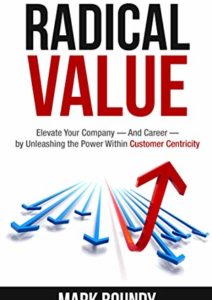If your sales training investment is not achieving the outcomes you expected, you are in good company. It happens pretty often. The problem probably isn’t the training program you chose. You probably made one (or more) of five common faulty assumptions about your sales training initiative.
Did You Assume Training Doesn’t Require follow-up?
A lot of companies “train and glide”, thinking that sales training alone will change selling behaviors. CSO Insights calls this “informal sales process”, or “train your people, then let them decide whether to adopt the training” or the “train, then guide”. Other research shows that 87% of training is gone 30 days post-event.
A lot of leaders assume that training contains simple knowledge transfer, not behavior change. Simple knowledge transfer training might include how to prepare a quote, or how to enter an opportunity in your CRM system. Most sales training, though, requires participants to change selling behaviors. Behavior change requires a robust reinforcement and coaching program. Your front line sales managers need great coaching skills. Sales leaders need to make sure they have the time and can establish regular coaching cadence with each of their salespeople.
Are You Focusing on Sales Process Training or on Buyer Enablement?
Did you assume that sales success simply requires salespeople to go through the right motions in the right order at the right time? The faulty assumption here is that buyers are aligned with your selling process. Reality is often far different…it’s never the customer’s job to align with your sales process.
I’ve used the word methodology to describe “the process of aligning selling and buying processes”, but I’ve started to use the term buyer enablement. A lot goes into buyer enablement:
- Guiding a customer through a decision “process” they may have never experienced
- Bringing the right people into the group, understanding their motivations and connecting your offer to outcomes they value
- Helping the customer examine their situation in new/different ways
- Emphasizing customer buying metrics over sales activity metrics
If your training isn’t centered on the customer’s buying process, you’re unconsciously assuming that your sales process can push a rope. Don’t do that.
Are You Selling to Personas Expected in the Buying Decision, or Everyone Affected?
The faulty assumption here is that it’s most efficient to sell only to the organization with budget. The world has shifted underneath this assumption in the past few decades, and now the selling world no longer fits this bit of traditional wisdom.
For many years, customer organizations have become more and more specialized, with narrow functions operating within more silos. These are organizations filled with people who no longer have line-of-sight to their own customers and business environments. The same function you once sold to is now 2-3…or 5. The problem is, only one of those functions controls the budget for what you are selling. Products and services have impacts in several of those. Worse, your product or service helps provide a positive impact in many distant silos as well. You may not want to proactively engage every function impacted as you pursue an opportunity…but there are also reasons you might.
Not only are buying organizations more compartmentalized, but some products are more complex, with more broad-reaching impacts.
The assumption that the world is still as simple as it used to be is a trap. Where it was once prudent to keep the number of personas involved as low as you can manage, there can often be reasons to “pack the court” in your favor with “allies from distant lands”.
Who all are you training?
As the buying ecosystem has become more fragmented, many of those fragments/specialties interface with one of your “sellers” without a “sales” job title. Some companies have over ten specialist roles calling on a customer. More important, these customer personas have trusting relationships with their non-sales counterparts. Many sellers can gather information that sales could never dream of obtaining. Nonetheless, many companies train only a couple of their selling roles how to uncover and articulate customer value.
The old assumption that you only need to train salespeople (plus maybe inside sales and sales engineering) is obsolete. The world of sales is more compartmentalized than it was when all of today’s selling methodologies were designed. The conversational training is still valid – it’s just critical for a wider range of sellers than most organizations think.
Think of it another way: Your buyer just starts their life with your product or service at the time of sale, right about the time your salespeople leave the scene. If you want to give those salespeople a better chance at a subsequent sale, maybe you should consider your implementation, client success, customer service, technical support, operations, etc. sellers as a critical component to that follow-on sale.
Tip: avoid losing time and money with Uvaro’s online sales training. Get access to a curriculum of sales skills and tech-focused learning and pay nothing until you’ve landed a job
Did you follow the “Less is More” rule?
We’ve talked about giving sales managers a larger coaching role – a huge time commitment. We’ve talked about giving salespeople the added burden of closer coordination with many seller roles. And of course, we’ve asked all of those non-sales roles to become more proficient at customer conversations. Implementing a culture of continuous value improvement adds stuff to a lot of plates.
When looking at your responsibilities, what can you take away or make easier? This requires ruthless simplification that might shake up Marie Condo.
There’s an unwritten assumption in any big organization, for-profit, nonprofit, or government. It goes like this: Anything worth doing is worth overcomplicating. I’ve discussed a related human organizational trait: systems, processes, and metrics survive much longer than the need that gave rise to them. (the strategic helium reserve, born during world wars, survived well into the 21stcentury, and we still sell to complex super-siloed companies using only the sales role.). Some zero-based thinking on what we measure is in order.
Many managers also assume that “more metrics must mean that you know more”. The human-based truth is more grim: more metrics means selective compliance…individuals cherry pick which metrics they will report/comply with, which means your reports are based on only those data that people felt personally comfortable reporting. You have crap data with a systematic optimistic bias. Yikes. Make a list of the critical items you need to measure, what you need to coach…and then figure out which half of them you can combine or delete.
Break the Boundaries of Your Hidden Assumptions and Do Great Things
I love helping clients build value-focused cultures…a doable step at a time. It starts with shedding bad assumptions. Can we talk about your situation? As always, please like, comment and/or share. Contact me if you’d like my best thinking on your situation.
To your success!













Comments (1)
Yes your assumptions are the problem